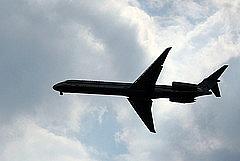Flying fake cardiologist's publications start to crash, taking co-pilots down too

The charade perpetrated by William Hamman, the United Airlines pilot who had a second, lucrative career as a fake cardiologist, is starting to have consequences.
Hamman claimed to have a medical degree from the University of Wisconsin-Madison, and claimed to be board certified in cardiology. He convinced universities, federal agencies, and the press that he was an expert in medical training, including Associated Press reporter Marilynn Marchione. After quoting Hamman as an expert in a piece about board certification, Marchione doubled back and found that he had been fibbing about his own medical credentials for a very long time.
Now, as Retraction Watch reported last week, some of the scientific journals where Hamman published research are starting to double back, too. This time, there are consequences not just for Hamman but also for colleagues who appear to have been blurring some ethical lines themselves.
Quality Management in Health Care (QMHC) has taken the unusual step of retracting an article where Hamman was a co-author. The journal did this despite the fact that Hamman's lack of medical degree did not appear to have distorted the research in any way and despite the fact that his seven co-authors on the paper had, as the journal editor put it, "perfectly legitimate" credentials.
Why?
Because the journal article came perilously close to what is known in the publishing world as "duplicate publication." This has tripped up researchers in the past, including a notorious case that I covered while at the Los Angeles Times.
For some journal editors, duplicate publication is actually worse than plagiarism because it is an attempt to present something old as something new. With plagiarism, often an author is merely borrowing writing from someone else to help them make their argument. With duplicate publication, an author is misleading a journal about the entire content of the article being submitted.
How bad was it?
In September 2009, the Journal of Patient Safety published this article that Hamman submitted: "Using in situ simulation to identify and resolve latent environmental threats to patient safety: case study involving a labor and delivery ward." The abstract begins: "Since the publication of To Err is Human, health care professionals have looked to high-reliability industries such as commercial aviation for guidance on improving system safety. One of the most widely adopted aviation-derived approaches is simulation-based team training, also known as crew resource management (CRM) training. In the health care domain, CRM training often takes place in custom-built simulation laboratories that are designed to replicate operating rooms or labor and delivery rooms."
Now here is the piece QMHC published in July 2010: "Using in situ simulation to identify and resolve latent environmental threats to patients safety: case study involving operational changes in a labor and delivery ward." That's right. There are only three additional words in the title: "operational changes in".
What about the content? Well, the abstract is nearly identical, too: "Since the publication of To Err Is Human in 1999, health care professionals have looked to high-reliability industries such as aviation for guidance on improving system safety. One of the most widely adopted aviation-derived approaches is simulation-based team training, also known as crew resource management training. In the health care domain, crew resource management training often takes place in custom-built simulation laboratories that are designed to replicate operating rooms or labor and delivery rooms."
The authors on both submissions are the exact same and listed in the exact same order:
William Hamman, Beth Beaudin-Seiler, J. Matthew Beaubien, Amy Gullickson, Krystyna Orizondo-Korotko, Amy C. Gross, R. Wayne Fuqua, and Richard L. Lammers.
Quality Management in Health Care's editor in chief Jean Gayton Carroll wrote:
Mr. Hamman had not been involved with data collection or processing. On its own, the article was acceptable. His coauthors were unaware of his deceptions. However, further investigation showed that Hamman and the same team of coauthors had published closely similar but not identical papers in other journals. The combination of these findings means that QMHC has no choice other than to issue a retraction of our article.
This begs two questions. First: How do the journal editors know that not a single one of the seven co-authors had any idea that Hamman was faking his credentials? Second: Will this behavior have any long-term consequences for the other six authors, all of whom, so far, have escaped the kind of infamy now pinned to Hamman like a pilot's wings?
We think the answer to the first question may be yes, but we doubt any journal could get to the bottom of it with ease. We think the answer to the second question remains to be seen. Will QMHC and its sister publications continue to accept articles submitted by these authors? Should they? What is an appropriate punishment when something like this happens?
I'd love to hear your comments. Post them below or send them to me at askantidote@gmail.com. You also can view this non-doctor on the Doctors Behaving Badly map and follow Antidote on Twitter @wheisel.
Related Posts:
Photo credit: preston.rhea via Flickr

